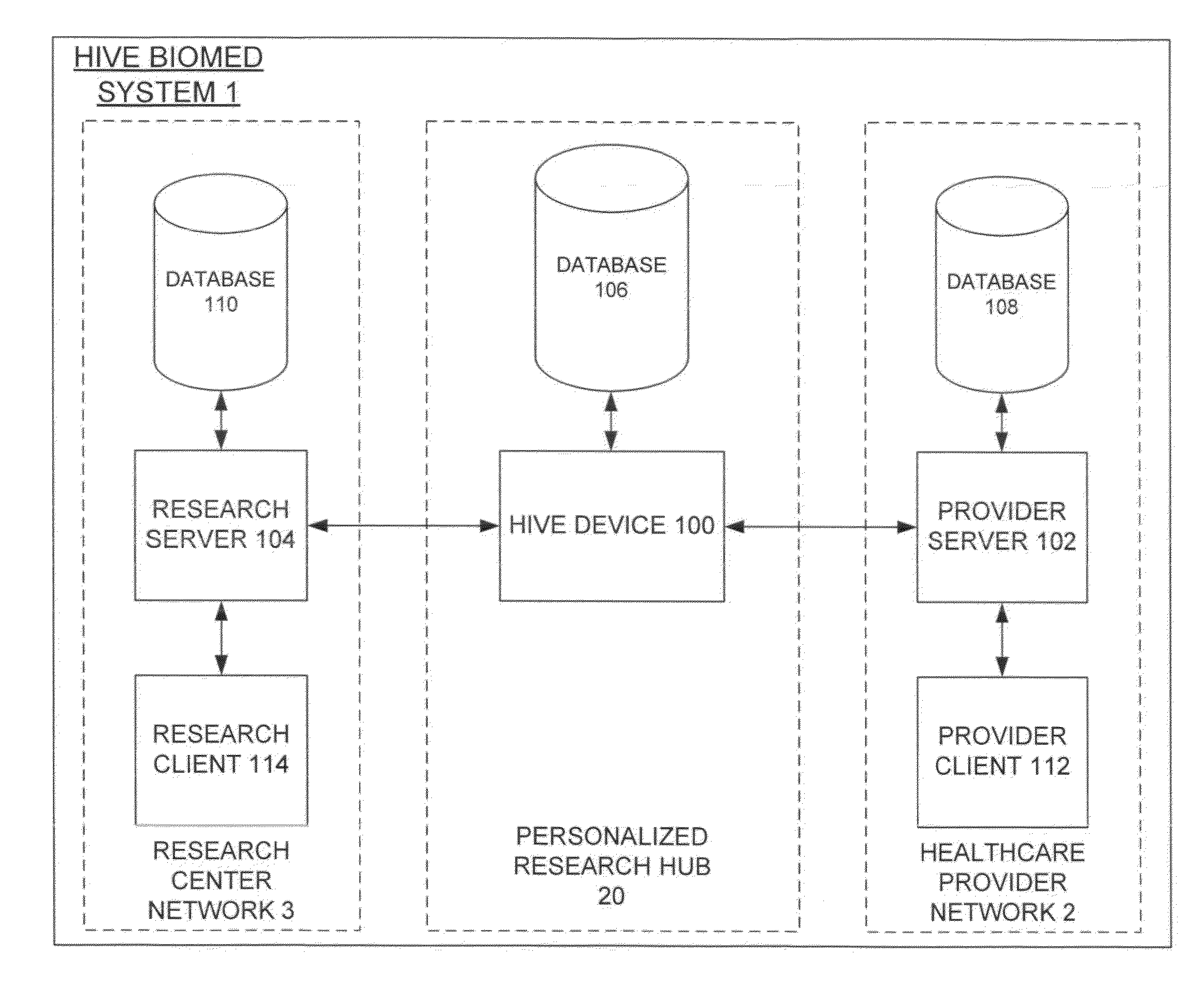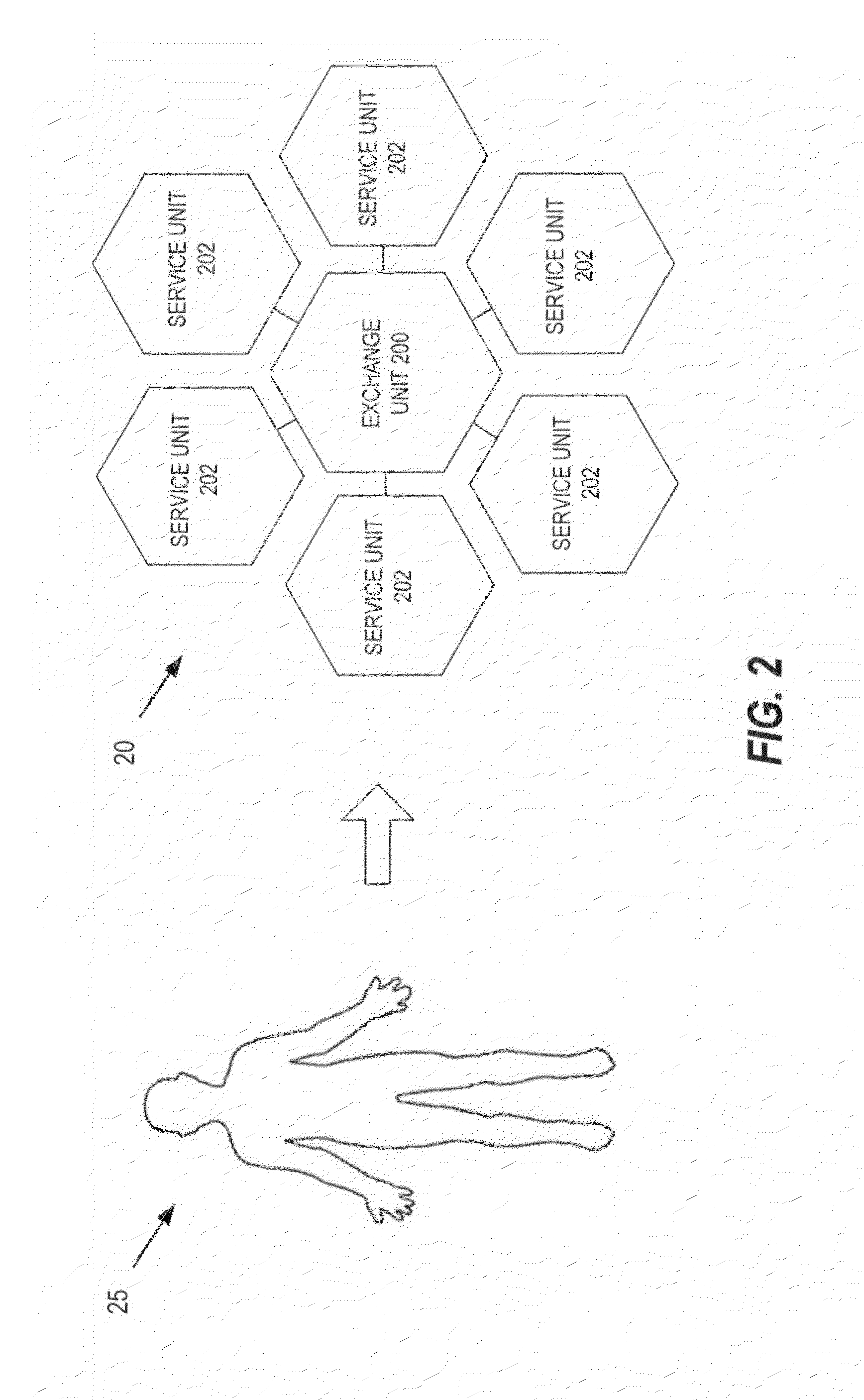System and method for personalized biomedical information research analytics and knowledge discovery
a biomedical information and analytics technology, applied in the field of biomedical informatics, can solve the problems of inability to cope with the newly generated biomedical metadata, inability to customize the research process, and large information complexity, and achieve the effects of improving analytical tools, facilitating search, and high total costs
- Summary
- Abstract
- Description
- Claims
- Application Information
AI Technical Summary
Benefits of technology
Problems solved by technology
Method used
Image
Examples
Embodiment Construction
[0098]Referring now to the drawings, wherein like reference numerals designate identical or corresponding parts throughout the several views.
[0099]FIG. 1 illustrates an exemplary network overview showing relationships between elements of a HIVE BIOMED SYSTEM 1 according to one aspect of the present disclosure. While not limiting, the HIVE BIOMED SYSTEM architectural framework described herein is preferably designed on the assumption that it will be suitable for a tertiary-care hospital that has a research center facility. It is also assumed that the hospital operates its medical records electronically. Further, its research center should preferably have significant biomedical research activities and sufficient data warehousing capability.
[0100]Referring to FIG. 1, the exemplary HIVE BIOMED SYSTEM 1 depicts a high-level design illustrating the relationship between a tertiary-care hospital (healthcare provider network 2) and a biomedical research center (research center network 3). A ...
PUM
 Login to View More
Login to View More Abstract
Description
Claims
Application Information
 Login to View More
Login to View More - R&D
- Intellectual Property
- Life Sciences
- Materials
- Tech Scout
- Unparalleled Data Quality
- Higher Quality Content
- 60% Fewer Hallucinations
Browse by: Latest US Patents, China's latest patents, Technical Efficacy Thesaurus, Application Domain, Technology Topic, Popular Technical Reports.
© 2025 PatSnap. All rights reserved.Legal|Privacy policy|Modern Slavery Act Transparency Statement|Sitemap|About US| Contact US: help@patsnap.com



